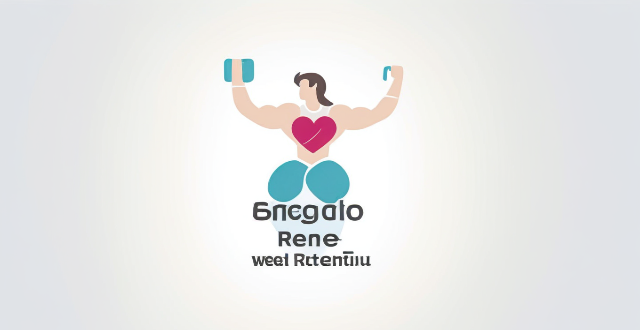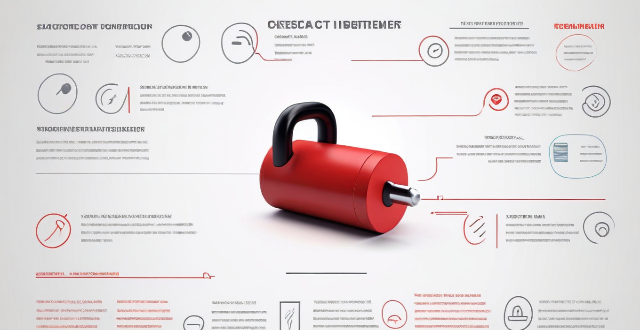Weight Aerobic

Can aerobic exercise help me lose weight ?
Aerobic exercise, or cardio, is an effective way to lose weight. It increases heart rate and breathing, leading to higher calorie burn during and after the workout. Moderate-intensity aerobic activities also use fat as fuel, improving metabolic rate for further calorie expenditure at rest. Regular cardio can strengthen heart muscles for efficient blood pumping and contribute to muscle endurance. Types of aerobic exercises include running, cycling, swimming, walking, and group fitness classes like Zumba. To successfully incorporate aerobic exercise into a weight loss plan, it's recommended to start slowly, mix up activities, stay consistent, and combine with strength training. Potential challenges such as overexertion and plateaus in progress should be managed by adjusting routines. Overall, aerobic exercise can aid in weight loss when part of a balanced fitness regimen.

What are the benefits of aerobic exercise ?
Aerobic exercise, also known as "cardio," is a form of physical activity that increases your heart and breathing rate. It's any activity that keeps large muscles moving in a rhythmic manner for an extended period of time. Some examples include brisk walking, jogging, swimming, cycling, and dancing. The key benefits of aerobic exercise include improved heart health, weight management, boosted immune system, improved lung function, reduced stress, improved sleep, boosted mood, increased brain volume, slowed age-related cognitive decline, improved stamina, enhanced bone health, and promoted longevity. Incorporating aerobic exercise into your lifestyle can greatly improve your quality of life.

Can aerobic exercise improve my cardiovascular health ?
Aerobic exercise is essential for maintaining and improving cardiovascular health, offering benefits such as strengthened heart muscle, lowered blood pressure, increased HDL cholesterol, reduced inflammation, weight management, improved circulation, and better blood sugar regulation. Regular aerobic activities like walking, jogging, cycling, swimming, or group fitness classes can significantly enhance overall heart health. The American Heart Association recommends at least 150 minutes of moderate-intensity aerobic exercise weekly, spread throughout the week, to achieve these benefits.

What are some examples of aerobic exercises ?
Aerobic exercises are physical activities that increase heart rate and breathing to deliver more oxygen to muscles, improving cardiovascular health, burning calories, and reducing chronic disease risk. Examples include using cardiovascular machines like treadmills and elliptical trainers, outdoor activities such as running and cycling, group fitness classes including aerobic dance and spinning, sports like basketball and tennis, and low-impact options like brisk walking and water aerobics. Benefits encompass improved heart health, weight management, increased stamina, mental health enhancement, and immunity boost. Safety precautions include consulting a healthcare professional, proper warm-up and cool-down, staying hydrated, and listening to your body to avoid overexertion.

How often should I do aerobic exercise to see results ?
Aerobic exercise is an excellent way to improve your cardiovascular health, increase endurance, and burn calories. The frequency with which you should do aerobic exercise to see results depends on several factors, including your fitness level, goals, and overall health. If you are just starting out, it's recommended to do aerobic exercise three to four times a week for 20-30 minutes each session. As you become more comfortable with the activity, you can gradually increase the duration and frequency of your workouts. If your goal is to lose weight or improve your overall health, doing aerobic exercise three to five times a week for 30-60 minutes each session is recommended. If your goal is to increase endurance or compete in an athletic event, you may need to do aerobic exercise six or seven times a week for 45-90 minutes each session. It's important to listen to your body and avoid overtraining to prevent injury and burnout.

How often should seniors engage in aerobic activities for heart health ?
Engaging in regular aerobic activities is crucial for seniors to maintain heart health and overall well-being. The American Heart Association recommends at least 150 minutes of moderate-intensity or 75 minutes of vigorous-intensity aerobic activity per week, spread throughout the week. For seniors, this could include brisk walking, swimming, or biking for at least 30 minutes five days a week (moderate intensity) or running and fast cycling for at least 25 minutes three days a week (vigorous intensity), depending on their capability and medical restrictions. Regular aerobic activity offers numerous benefits for seniors, including improved cardiovascular fitness, better blood pressure and cholesterol levels, weight management, increased muscular strength and endurance, and boosted mental health. However, safety precautions should be taken, such as consulting with a healthcare provider before starting an exercise program, starting slowly, choosing low-impact exercises, staying hydrated, wearing appropriate clothing and footwear, and monitoring bodily responses to the activity. By following these guidelines and taking necessary precautions, seniors can significantly improve their quality of life and maintain their independence longer.

Are there any risks associated with aerobic exercise ?
Aerobic exercise, also known as cardio, is a popular form of physical activity that involves increasing your heart rate and breathing hard for an extended period of time. While aerobic exercise has numerous health benefits, it is important to be aware of the potential risks associated with this type of exercise. In this article, we will discuss some of the risks associated with aerobic exercise and how to minimize them. Overexertion is one of the most common risks associated with aerobic exercise. To avoid overexertion, it is essential to start slowly and gradually increase the intensity and duration of your workouts. Another risk associated with aerobic exercise is the potential for injuries. To reduce the risk of injury, it is important to wear appropriate footwear and clothing, warm up before exercising, and use proper form and technique when performing exercises. Dehydration is another risk associated with aerobic exercise. To prevent dehydration, it is important to drink plenty of water before, during, and after your workouts. While rare, cardiovascular events such as heart attacks and strokes can occur during aerobic exercise. To minimize the risk of cardiovascular events, it is important to undergo a thorough medical evaluation before starting an aerobic exercise program.

How does aerobic exercise impact lung capacity and function ?
Aerobic exercise can increase lung capacity and improve lung function by strengthening the muscles used for breathing, stimulating the respiratory system, and increasing gas exchange efficiency. Regular aerobic exercise can also reduce the risk of respiratory diseases, improve immune function, and reduce inflammation in the airways.

How can I incorporate aerobic exercise into my daily routine ?
Incorporating aerobic exercise into your daily routine can improve cardiovascular health, burn calories, and enhance mood and energy levels. Here are ways to seamlessly incorporate aerobic exercise into your day: 1. **Morning Vigor**: Start the day with activities like jogging, cycling, or jump roping. 2. **Lunch Break Activities**: Use your lunch break for stair climbing, walking meetings, or yoga. 3. **Post-Work Energy Booster**: After work, engage in gym sessions, outdoor sports, or dancing. 4. **Evening Wind-Down**: Before bedtime, consider gentle exercises like evening walks, Tai Chi, or swimming. 5. **Weekend Adventures**: On weekends, engage in longer duration exercises like hiking, biking, or water sports. 6. **Lifestyle Integration**: Make aerobic exercise a habit by commuting actively, doing active errands, or using fitness trackers.

Is there a difference in sleep quality between aerobic and anaerobic exercise ?
Both aerobic and anaerobic exercises can improve sleep quality, but aerobic exercises are more consistently associated with better sleep duration, efficiency, and latency. Anaerobic exercises may also have benefits for sleep quality, but it is important to manage any potential negative effects such as muscle soreness and fatigue.

How often should I exercise to see weight loss results ?
To see weight loss results, start with low-intensity workouts and gradually increase intensity over time. Aim for at least 150 minutes of moderate-intensity exercise per week, mix up your workouts, and incorporate strength training. Consistency is key!

How long should my aerobic workouts be ?
Aerobic exercises, or cardio workouts, are vital for overall health and fitness. The American Heart Association recommends at least 150 minutes of moderate-intensity activity or 75 minutes of vigorous activity per week. This can be broken down into shorter sessions throughout the day. Starting slow and gradually increasing duration and intensity is advised. Mixing up activities helps prevent injury and keeps workouts interesting. Benefits include improved cardiovascular health, weight management, mood enhancement, and a stronger immune system. Always consult with a healthcare professional before starting any new exercise regimen.

What types of workouts are most effective for weight management ?
The most effective workouts for weight management include aerobic exercise, strength training, high-intensity interval training (HIIT), flexibility and stability training, and combination workouts. Aerobic exercises are great for burning calories and improving cardiovascular health, while strength training helps increase metabolism and prevent injury. HIIT is incredibly effective at burning calories in a short amount of time and boosting metabolism. Flexibility and stability training focus on improving range of motion, balance, and core strength. Combination workouts incorporate multiple types of exercise into one session, providing the benefits of each while keeping workouts interesting and challenging. The most effective workout for weight management is one that you enjoy and can stick to consistently over time, paired with a healthy diet for optimal results.

How much exercise is needed per week to prevent chronic disease ?
Chronic diseases are a major cause of death and disability worldwide. Regular physical activity can help reduce the risk of developing chronic diseases such as heart disease, diabetes, and some types of cancer. According to the World Health Organization (WHO), adults should aim to do at least 150 minutes of moderate-intensity aerobic exercise or 75 minutes of vigorous-intensity aerobic exercise each week, along with muscle-strengthening activities at least twice a week. However, the amount of exercise needed to prevent chronic diseases may vary depending on individual factors such as age, sex, body weight, and overall health status. It's recommended that people try to incorporate at least 30 minutes of moderate-intensity aerobic exercise into their daily routine, along with strength training exercises whenever possible.

How does exercise impact the prevention and management of type 2 diabetes ?
Exercise is important to prevent and manage type 2 diabetes. It improves insulin sensitivity, reduces blood sugar levels, and promotes weight loss. Regular physical activity can help prevent type 2 diabetes by improving the body's ability to use glucose for energy and reducing visceral fat. To prevent type 2 diabetes, adults should aim for at least 150 minutes of moderate-intensity aerobic exercise per week or 75 minutes of vigorous-intensity aerobic exercise per week. For managing type 2 diabetes, it is recommended that people engage in at least 150 minutes of moderate-intensity aerobic exercise per week or 75 minutes of vigorous-intensity aerobic exercise per week. Strength training exercises should also be included at least twice per week.

Can organic food help with weight loss ?
Organic food may aid weight loss by reducing exposure to harmful chemicals, offering higher nutrient content, having lower calorie density, and improving digestion. Incorporating organic options slowly, choosing locally grown produce, reading labels carefully, planning meals, and including protein sources can support a healthy eating plan conducive to weight loss.

Can fitness trackers help me achieve my weight loss goals ?
Fitness trackers can support weight loss by tracking steps, heart rate, sleep, and calories. They provide motivation, accountability, and data for decision making. However, they have limitations such as overreliance on technology and accuracy concerns. It's important to use them wisely and in conjunction with other healthy habits for effective weight loss.

How much weight should I lift during strength training ?
The amount of weight you should lift during strength training depends on various factors such as your fitness level, goals, and experience. Here are some guidelines to help you determine the appropriate weight for your routine: start with a light weight, increase gradually, choose the right number of repetitions, listen to your body, and consider your goals. Remember to consult with a fitness professional or personal trainer to develop a customized program that meets your specific needs and goals.

Can strength training help with weight loss ?
Strength training, involving the use of resistance to induce muscular contraction and build strength, can significantly contribute to weight loss by increasing metabolic rate, boosting post-exercise oxygen consumption (EPOC), improving body composition, and enhancing appetite control. Incorporating strength training into your routine, starting slowly and focusing on compound movements while staying consistent, can help achieve weight loss goals.

Can yoga help with weight loss ?
Yoga can be a valuable addition to a weight loss program due to its ability to improve muscle tone, increase flexibility, reduce stress levels, and promote mindful eating habits. Incorporating yoga into your routine along with other forms of exercise and healthy lifestyle habits can help you achieve your weight loss goals and improve overall health and well-being.

What exercises are beneficial for women's health ?
Regular physical activity is crucial for women's health, preventing chronic diseases, improving mental health, and boosting self-esteem. Aerobic exercises like running, swimming, and cycling are great for cardiovascular health and weight management. Strength training exercises such as weightlifting, resistance bands, and bodyweight exercises can improve bone density and reduce the risk of osteoporosis. Yoga helps to improve flexibility, reduce stress, and enhance mental clarity, while Pilates focuses on core strength, flexibility, and balance. Incorporating these exercises into a fitness routine can lead to improved cardiovascular health, stronger bones and muscles, reduced stress levels, and enhanced overall well-being.

What are some healthy dinner recipes for weight loss ?
The text provides a list of eight healthy dinner recipes that can aid in weight loss. These recipes include grilled chicken with steamed vegetables, quinoa salad with roasted veggies, salmon with asparagus, lentil soup, turkey chili, stuffed bell peppers, cauliflower rice stir fry, and zucchini noodles with pesto sauce. The text emphasizes the importance of eating a balanced meal before bedtime to maintain a healthy weight and ensure the body gets necessary nutrients for optimal functioning.

Can running help me lose weight quickly ?
Running is a popular form of exercise that can help you lose weight quickly, but it's important to understand the factors that contribute to weight loss and how running fits into the equation. In this response, we'll explore the benefits of running for weight loss and provide tips on how to maximize your results. Benefits of Running for Weight Loss: 1. Burns Calories: Running is a high-intensity cardio workout that burns a significant number of calories per minute. The more calories you burn during exercise, the easier it is to create a calorie deficit, which is necessary for weight loss. 2. Increases Metabolism: Running can boost your metabolism, allowing you to burn more calories even when you're not exercising. This increased metabolic rate can lead to faster weight loss over time. 3. Builds Muscle: Running helps build lean muscle mass in your legs, glutes, and core. Muscle tissue burns more calories at rest than fat tissue, so having more muscle can contribute to faster weight loss. Tips for Maximizing Weight Loss with Running: 1. Set Realistic Goals: Aim for a healthy rate of weight loss, such as 1-2 pounds per week. Rapid weight loss can be harmful and difficult to maintain in the long term. 2. Combine Cardio and Strength Training: Incorporate strength training exercises into your routine to build muscle and increase your overall calorie burn. Focus on compound movements like squats, lunges, and deadlifts to target multiple muscle groups at once. 3. Stay Consistent: Make running a regular part of your routine, aiming for at least 3-4 sessions per week. Consistency is key to achieving long-term weight loss goals. 4. Watch Your Diet: Pay attention to what you eat and try to consume a balanced diet rich in whole foods, lean proteins, and healthy fats. Avoid processed foods, sugary drinks, and excessive amounts of alcohol, which can hinder weight loss efforts. 5. Rest and Recovery: Allow your body time to rest and recover between running sessions to prevent injury and avoid burnout. Incorporate stretching and foam rolling into your routine to aid recovery and improve flexibility. Conclusion: While running can be an effective way to lose weight quickly, it's important to approach your fitness journey with patience and realistic expectations. By combining running with strength training, watching your diet, and staying consistent with your workouts, you can maximize your weight loss results and achieve a healthier lifestyle.

How does weight influence a woman's fertility ?
Fertility can be affected by weight, with both underweight and overweight conditions presenting challenges. Underweight may lead to hormonal imbalances, disrupting ovulation and menstrual regularity, while overweight or obese women might face issues like PCOS, endocrine disruptions, and inflammation. Maintaining a healthy weight is crucial for optimal fertility, supporting regular ovulatory cycles, improved hormonal balance, and better pregnancy outcomes. Tips for managing weight include consulting healthcare professionals, following a balanced diet, exercising regularly, managing stress, avoiding crash diets, and monitoring menstrual cycles.

Does lifting weights help with weight loss ?
Weight loss is a common goal for many people, and weightlifting is one of the most popular methods. However, does lifting weights help with weight loss? This article explores the benefits and drawbacks of weightlifting as a means of weight loss. One of the main benefits of weightlifting is muscle growth, which can lead to an increase in metabolism and help with weight loss. In addition, weightlifting can also help with fat burning and improved cardiovascular health. However, there are also some potential drawbacks to weightlifting, including high initial costs, potential injuries, and a significant time commitment. If you are interested in trying weightlifting as a way to lose weight, make sure you do your research and find a program that fits your needs and lifestyle.